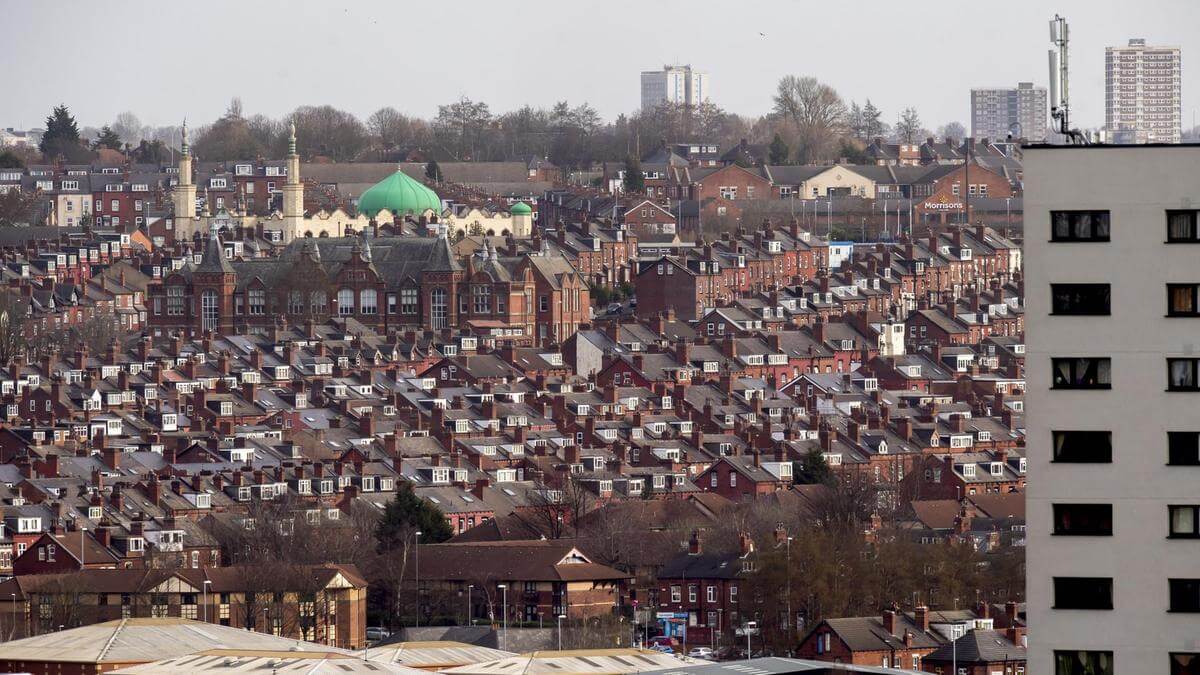By Mick Brown
Along with extreme wealth comes extreme security costs
A few years ago an international businessman – we’ll call him Hugo for the sake of discretion – was involved in the oil business in Latin America where he lived. He was doing well, winning tenders ‘in ways most of my rivals hated’. In a bid to discredit him, the rivals started planting stories in the media designed to blacken his name. Then the newspapers began publishing his address and pictures of his wife and family. “At that stage I had to make a decision whether to hire a squad of bodyguards or leave. I left.”
The bodyguards came later.
Roll on a couple of years and Hugo bought a company in another Latin-American country, rated one of the most unstable and dangerous in the world. His wealth alone would have been enough to bring unwanted attention, but in a volatile country, where the line between business and crime is a fine one and often crossed, the risk of kidnap or murder became real.
Hugo did not live in the country, but would fly in regularly for meetings, staying for two or three days at a time. This is how it worked: through a London security company, he hired a group of security professionals, ex-SAS and Royal Military Police – universally recognised as the best trained and most professional protection money can buy. A bodyguard would be waiting as he stepped off the plane and would accompany him to a waiting car and driver, parked at the closest point to the exit. “You wouldn’t know he was security. He wouldn’t be carrying a gun or have a radio in his hand or anything like that. The idea would be not to call too much attention to me or him.”
In the car, Hugo would be briefed on a ‘safety word’ (in one instance, Titanic) – to be used in any situation necessitating “getting the hell out of there as quickly as possible. Most people,” he says, “think security is about your guys fighting the other guys. It’s not. It’s about extracting you in one piece.”
Following an itinerary, he would check in to a hotel, taking a corner suite and booking either the entire floor or rooms immediately adjacent with a body-guard posted in each. All rooms would have been swept for bugs beforehand. One guard would stand outside his suite; another would be downstairs, watching people come in or out. For meetings in the hotel, everybody would be searched going in and have their mobile phones taken. If Hugo had to travel anywhere it would be in a bulletproofed vehicle, with two bodyguards and a driver. Wherever he was going would have been reconnoitred beforehand.
On one occasion, one of his business partners was travelling with three UK-trained security guards when the car was surrounded by a group of armed men, demanding to know their business. Rather than pulling their own guns, two of the security men calmly stepped out of the car and started photographing the group, who were so unsettled that they left. “It was incredible,” says Hugo. “The security guys knew how to read these things and exactly what to do.”
On another occasion, a gang was attempting to steal some documents from a car. They were confronted. Shots were fired and two of the thieves were killed. “It was serious stuff. And then, in countries like that, you don’t hang around for the police.” The security men skipped over the border to a neighbouring country and were flown out. Hugo estimates that he was spending around $200,000 (£144,000) a month on personal protection. “But it was worth it.”
Mayfair, Kensington, St John’s Wood and the Cotswolds aren’t Central or South America, but if you’re very rich things can still get a little sketchy, and in times of uncertainty help may be required.
In 2019, the UK market in security was worth over £13 billion. And Britain, says Philip Ingram, a security consultant and the head of content of the International Security Expo, held each year at Olympia in London, is seen as ‘the gold standard’, exporting more than £7 billion worth of material and expertise. “The Middle East in particular loves taking all the standards and processes the UK has developed and applying them there,” he says.
The International Security Expo brings together some 250 exhibitors and attracts security companies, architects looking for the latest technologies to design into buildings and public spaces, and representatives of government organisations who, as Ingram puts it, “won’t necessarily hand you a business card”.
But the exhibits on display – perimeter intruder-detection systems, technical-surveillance countermeasures, buried intrusion detectors – hold a particular interest for that mysterious group known as ultra-high-net-worth individuals. Silicon Valley titans, Russian oligarchs, Middle Eastern potentates, lucky hedge-fund managers, the odd minted celebrity: if they’re not worrying about getting more money, they’re worrying about how to hold on to what they’ve got.
Earlier this year it was revealed that Facebook paid $23.4 million (£17 million) in 2020 to cover the security costs of its co-founder Mark Zuckerberg and his family, both at home and while travelling, in order to mitigate ‘identified specific threats’. Zuckerberg, who bought the four homes neighbouring his main residence in Palo Alto, California, to ensure his privacy, is guarded round the clock by armed protection officers and a security team that carries out a reconnaissance of wherever he is going, and he has bullet-resistant windows in his office.
There are few people who can match Zuckerberg’s £97 billion fortune – only Jeff Bezos, Elon Musk and Bernard Arnault and family, to be precise. But for the other 2,751 billionaires in the world – and those struggling along with only hundreds or tens of millions to their name, wealth brings not only luxury but also fear.
A recent survey by the property consultant Knight Frank revealed that London has the most so-called ‘prime’ homes of any city in the world, with more than 68,000 properties valued at £2 million-plus. Meanwhile, crime figures in the UK continue to rise. There were 299,868 reported burglaries in 2020, with robberies at 68,095 and vehicle crimes at 371,278. There has also been a huge increase in cyber attacks in the past year, with a 300 per cent year-on-year rise in ransomware episodes.
These are figures that inculcate a sense of rising unease among the rich. A recent survey of high-net-worth individuals, by the security company Chubb, showed that on average 28 per cent felt more vulnerable at home, at work and travelling than five years ago. And the single greatest fear was of violent home invasion.
“The world’s becoming a more threatening place,” says Jack Mann, who runs Alma Risk, a company specialising in personal protection. “People want to keep their families safe, and they’re prepared to go to pretty extravagant lengths to do that.” Just how extravagant might that be?
Imagine for a moment that you are that Indian billionaire or Russian oligarch – or perhaps one of the 52 Hong Kong residents newly arrived in Britain, fleeing China’s new state-security laws, who have been granted a so-called golden visa after promising to invest at least £2 million in the UK. You’ve bought your house in Kensington or Hampstead, but your pride and joy is your new estate in the Cotswolds – not far, perhaps, from the £6 million property owned by David and Victoria Beckham, which masked thieves attempted to burgle in 2018. You are often away making more money, leaving your wife or husband at home with the children. What to do?
Philip Dowds is the MD of Okto Technologies, which develops and instals smart systems in homes and businesses. For a ‘360 degree shield’ and to keep any threat ‘as far away as possible’, he suggests the following.
Firstly, there is perimeter defence, comprising three elements: radar, thermal cameras to pick up body heat, and underground pressure sensors detecting anyone jumping over the wall. All of these would be integrated into a smart system that would eliminate the possibility of a false alarm being triggered by a fox or a badger. Anyone attempting to smash through the main gate in a truck would be met with a reinforced steel door capable of withstanding an impact at 40mph.
In the unlikely event of a breach in the outer defences, Dowds says, the super-wealthy will probably have their own security team on hand. (The raid on the Beckhams’ home was averted after their security staff spotted the intruders on CCTV, but not before the invaders had propped a ladder up to peer into an upstairs bedroom.) Lacking that, the occupier would be woken by an alarm, and have a control pad on hand to activate high-intensity security lights – imagine going from total darkness to the floodlights in a football stadium – along with loudspeakers, set at 110 decibels (as loud as a riveting machine), barking out a warning message. All of which is designed to make the intruder back off.
In the meantime, those inside have retreated to the panic room (or ‘serenity room’, as Dowds prefers). The old-fashioned panic room, he says, would usually be a bathroom or other small space, suitably reinforced. “But if your wife and family are locked in a small bathroom and they think people are attacking them, they’re not going to be very calm.”
A ‘serenity room’, on the other hand, will be the master bedroom, or a similarly familiar and comfortable area, specially customised – the walls lined with Kevlar, the doors made of reinforced steel, the windows bulletproof. Just as important, he says, will be ‘fully diverse communication’: separate phone lines buried deep inside the building and running in different directions in case the burglars or kidnappers have cut the obvious lines, with Wi-Fi, 5G and satellite channels to the outside world. Scented candles and piped new-age music to soothe jangled nerves are optional.
Then there’s the drone threat. It is estimated that one third of all the world’s 10 million drone flights a year have a criminal element. The latest perimeter-protection technology can alert a homeowner or their security team when a drone is heading towards them. And those who want can apply for government permission to allow them to locate the pilot and jam the communication system, causing the drone to fail, while at the same time notifying the authorities of the pilot’s whereabouts.
A complete home-defence system costs up to £1 million. A more modest package of perimeter protection with thermal cameras and radar, the lights and speakers, and a direct connection to the police ‘won’t blow the budget,’ according to Dowds – at about £100,000. He is working on a security system costing £2 million for a London property worth more than £150 million, for a client who will be there for only five or six weeks a year.
Can he tell me where it is? Dowds laughs. “No.”
Camilla Dell, the founder of luxury property agent Black Brick, which deals in London homes worth up to £20 million, says she is often surprised at how little security there is in older properties coming on to the market. “In a lot of the houses around The Bishops Avenue and Hampstead Garden Suburb it’s often just a burglar alarm and old-fashioned iron bars at the window.
“Where I do see security taken quite seriously is if you’re looking at a house owned by somebody who potentially could be under physical threat.” Ultra-high-net-worth Russians, for example, Dell says, “will often have bulletproof doors”.
What is also unexpected, she adds, is how little “very wealthy, very successful business people” know about security. “They tend to think in very simplistic terms: is this neighbourhood safe; what’s the crime rate? Does it have electric gates? If those boxes are ticked, they often won’t think beyond that. We always advise them to get a security firm to look where the weaknesses are and come up with a plan.” Recently, Dell hired a security team just to accompany her on viewings with a prospective woman buyer “who was very much in the public eye, in a negative way”.
“Technology is moving so fast that even security systems fitted two years ago may be outdated,” says Mann, who served with the Household Cavalry in Iraq and Afghanistan before setting up Alma Risk. “You would need to instal a system that is hardwired into the structure of the house and to change all the locks and alarms, because whoever was previously working there – cleaners or caretakers – might have access to existing systems.”
Screening your own staff is essential, and so is keeping them happy. A large proportion of break-ins and security breaches can be traced to disgruntled current or former employees.
“It’s the same principle as running a hedge fund in Mayfair dealing with sensitive information,” Mann says. “Everyone goes home in the evening, the office cleaners come in and someone hasn’t logged off properly, there’s some stuff in the wastepaper basket or left on the whiteboard… Generally speaking, no one has any idea who’s cleaning their office.”
Sweeping a house for eavesdropping devices – technical-surveillance countermeasures – is “another tick on the list for a happy client”.
Even the security systems installed for your protection become a threat in the wrong hands. Baby monitors can be hacked by mischief makers – stories abound of distressed parents hearing a voice coming over the monitor issuing expletives and threats, and rushing into the room to find there’s nobody there except a soundly sleeping child. “High-net-worth individuals will tend to have the latest gadgets, and the latest gadgets have security risks associated with them,” says Ingram. “Your internet-connected television, toaster or fridge could give someone a route into your network, and sophisticated hackers use people’s own security systems to target when they’re not in the home. These things need to be set up properly.”
“There’s a lot of technology on the market, and you can bolster up your house like a castle if you want to,” says Dom Whitmore, the operations director of Alma Risk, who spent over 20 years in the British Army. “But for the most intelligent, determined and driven criminal, there is always a way to navigate through that.” When thieves stole a reported £25 million in jewellery from Tamara Ecclestone’s Kensington home in 2019, they were able to evade the security and spend an hour undisturbed breaking into bedroom safes.
“It’s the mitigating procedures a security organisation implements that do the real work, and those constantly need reviewing,” Whitmore says.
Kidnapping, particularly of children, is another fear. There were about 1,100 child-abduction offences recorded by the police in England and Wales in 2019/20, 161 fewer than the previous year. There are no figures to differentiate how many of these were the result of domestic or custody disputes rather than ransom attempts, which often go unreported after being settled privately.
The security market abounds with all manner of devices to keep track of children, from wrist-worn GPS trackers to chips that can be sewn into clothing. But, as Mann points out, they offer no guarantee of safety.
“Children change their clothes a lot. You’d have to have a hell of a lot of trackers. If a child is taken and the kidnapper suspects there’s a tracker, they’ll just [remove it from] their wrist or change the clothes. The real question is, who’s monitoring that tracker? And what happens after it’s activated?” GPS tracker implants remain the stuff of fiction; there are no trackers small enough to implant into a child, and even if there were, recharging the battery would present a problem.
And as for prized possessions: what’s wrong with keeping the Monet or Warhol in a safe, or stashed away in a Zurich free port, and hanging a replica on the wall to fool visitors? And why not do the same with jewellery, when you can commission almost identical replicas?
The F1 racing driver Lando Norris may think again about choosing a timepiece from his safe after he had his wristwatch, worth £40,000, stolen by a group of thugs as he was approaching his McLaren sports car following the Euro final at Wembley. Which is where close protection comes in. Typically, hiring a personal bodyguard can cost anywhere between £500 and £1,500 a day. The stereotype of a pair of heavily muscled, shaven-headed goons in black suits is only for Chechen arms dealers and wannabe A-listers aiming to draw attention to themselves. The best security companies employ personnel so discreet you wouldn’t know they were there at all.
“Close protection is a skill,” Whitmore says. “Experienced protection officers are always anticipating what their client is going to do and considering, ‘What if X happens?’ It’s the way they dress, the way they hold themselves; it’s being streetwise. If someone is out shopping they might want the close protection to keep their distance; if they’re walking their dog at 10.30 at night they prefer to keep them near, looking like a couple.”
The more ostentatious your wealth, the greater the risk. Those who are in the business of showing off, not to mention footballers with Instagram accounts displaying pictures of their homes and supercars, are a particularly inviting target for thieves. In March, the Everton and Sweden goalkeeper Robin Olsen was held at knifepoint in front of his wife and children when thieves broke into his Cheshire home, making off with jewellery and a watch. A few weeks earlier two masked men burgled the home of the Everton manager, Carlo Ancelotti, while his daughter was said to be alone inside.
The best protection is not necessarily to instal radar, but to remain below it.


